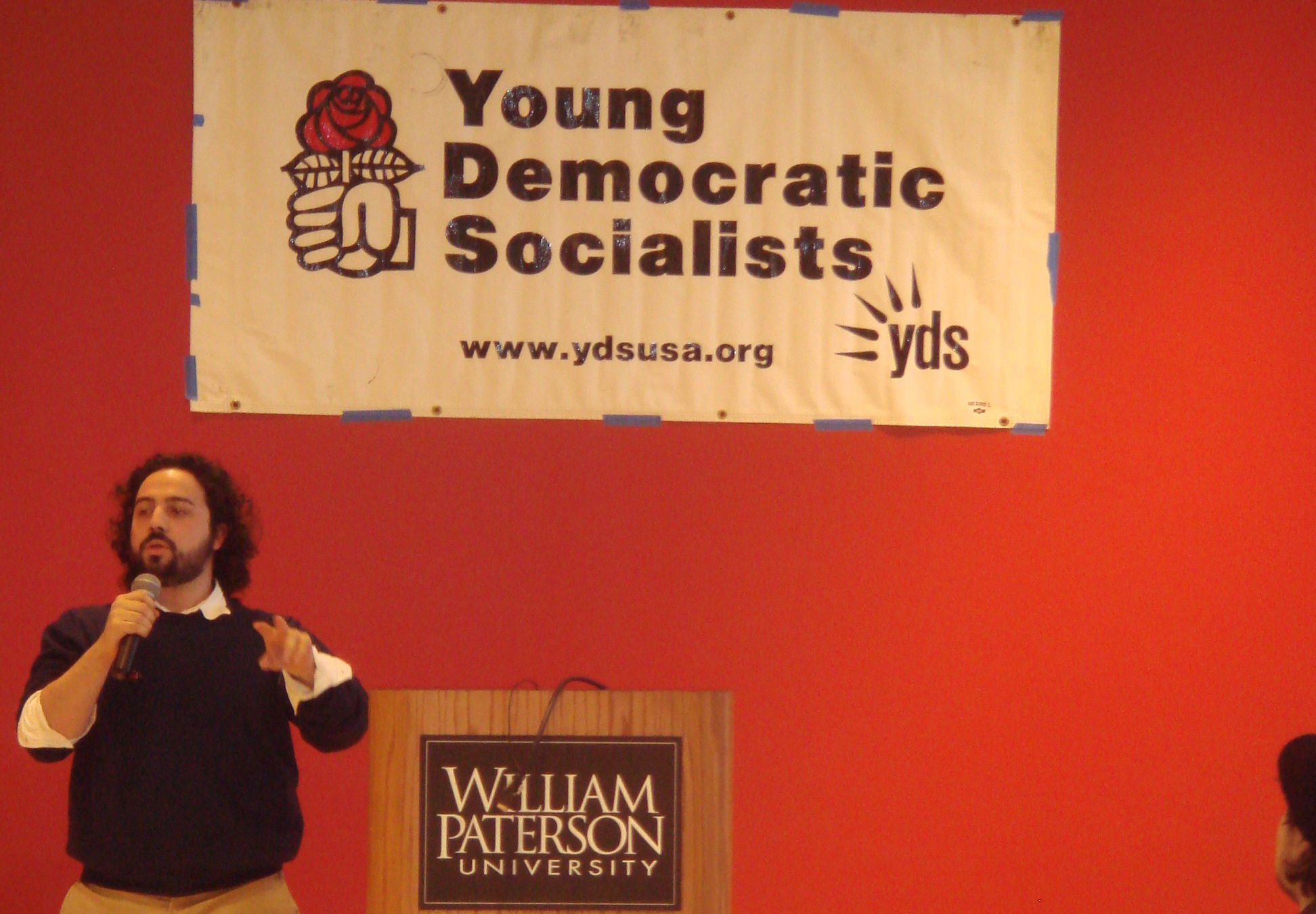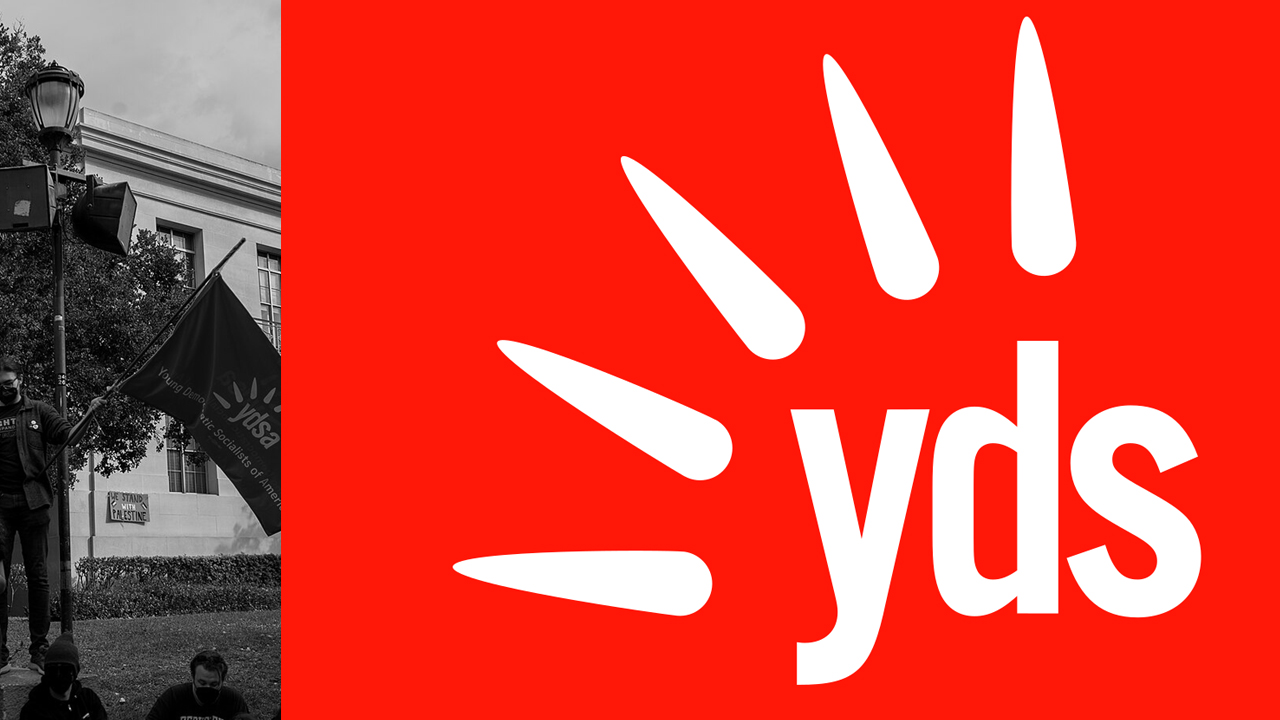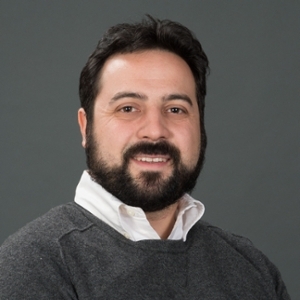Nearly two decades ago the Young Democratic Socialists (YDS), as it was then called, was on the brink of collapse. Our traditional social-democratic milieu organizing methods were failing us.
As the National Youth Organizer for the YDS, a role I held from 2006 to 2008, I saw the student group escape its lowest point. This narrow evasion of complete collapse rested on a reassessment of our longtime organizing strategies and tactics. Putting aside tradition, we focused on non-elite colleges not known for left-wing activism; emulated the merger strategy of particular US labor unions; adapted to new social media tools; and went as far as borrowing from the strategic retreat of Mao Zedong’s Red Army, albeit on a smaller scale.
A decade and a half later, I can reflect on that strategy as a product of a specific political moment for the left and a lack of resources for DSA and its youth wing. With the exception of Pink Tide governments in Latin America, the socialist movement seemed in terminal decline throughout the world –– especially in the so-called “first world.” The US was a paragon of the weakened workers’ movement with more internal fighting than against the boss. This led to a new labor federation called Change to Win in 2005, a split of several major unions from the AFL-CIO, championed by the Services Employees International Union (SEIU), which was growing but often more from mergers –– both welcomed and not –– with other unions than new organizing.
While not as depressing as organized labor, national student organizing was also radically different than it is today. Major groups such as the United States Student Association (USSA) –– which represented over a million students when I was in college –– simply don’t exist anymore.

The International Socialist Organization was probably the most dynamic of the anti-capitalist formations in the era, especially at colleges. These clubs often kept YDS out of forming chapters at the same school by sending an advanced cadre (for this purpose, a DSA/YDS member whose primary if not sole political commitment and skill-building is dedicated toward a socialist organization) to other group’s meetings to undermine the organizing effort. Regardless of ISO’s activities – DSA was weak. Our 5,000 members hid the fact that, of them, only a couple of hundred were cadres. YDS, too, had far fewer activists than that. When I was a student, absent a few people knowing then-congressman Bernie Sanders, the nearly invisible socialist movement might as well have only existed in history books.
That’s where I found myself as a student socialist activist at Bowdoin College. My college had a democratic socialist student club but was unaffiliated with either DSA or the Socialist Party, USA – the two national democratic-socialist formations. I eventually got the club to become a chapter of YDS by my junior year, which would be a harbinger of my campus organizing strategy when I worked for DSA a few years later. But as young socialists in Maine, we were as removed from our comrades around the country as much as people even outside of our movement. A big reason was that, even with the internet, the world was still not as directly connected as it is today.
Outside of email listservs, unless you knew a comrade directly, there were not really ways to communicate with fellow YDS members outside of our two annual conferences. While Facebook existed then, big group DMs and no Twitter made instant communication much harder among unfamiliar DSA and YDSA members on social media platforms. The isolation eventually led me to restart the YDS quarterly newsletter, Red Letter, which could at least inform student activists of what their peers were doing across the country from chapter updates to conference reportbacks.
A few months after graduating college, I was given my dream job of becoming the National Organizer for YDS. I had served two years in the Youth Section leadership (now called the National Coordinating Committee) and volunteered a summer in the national office. I thought I was aware of the strengths and weaknesses of YDS. I was wrong.
YDS was way worse off than I had expected. My first week, a chapter wrote in to say they were disaffiliating. I soon realized that our annual outreach conferences of a hundred or more students masked that effectively we had maybe five chapters across the whole United States. In fact, some of the chapters only had one remaining member. The YDS group at the University of Chicago was down to one comrade who was helping the nascent revival of Students for a Democratic Society host one of their first national events. We struggled not only to recruit cadre but to keep them interested in building us while as members.
This reflected what was called the “donut problem.” DSA was a “donut” as it had no center drawing cadre. Activists would become socialists, join DSA, and then conclude mass movement work was easier to do outside of DSA. Both DSA and YDSA would join coalitions but it was harder to justify being a socialist as you could get better political education and writing in the ISO or more easily do movement work in any number of single-issue nonprofits. So the members of DSA and YDS were primarily those incredibly loyal to the organization or the idea specifically of a democratic-socialist project being more important than just doing activism.
In the first weeks of my job, I concluded that YDS would either grow or die with me. The youth section was rudderless and without direction. In turn, I was getting a lot of different advice on what to do. But I was only given a $2,000 travel budget and when asked for how much to spend on the winter conference I received no clear answer at all. I knew I would be working with next to nothing. This meant that I needed to find a strategy and find it quick.
At this time, one of the major pieces of advice that I received was that I should focus on building a YDS presence on major campuses of New York City. This was very good counsel even though I ultimately rejected it. The logic was simple: YDS needed a national center in NYC, where the office was, and a venue where we could host the winter conference. Having a campus group or two could provide valuable volunteers and conference space that the YDS staffer and underfunded organization so desperately needed.

So why did I eschew this guidance? For one, I felt that the YDS I was offering was not attractive in the biggest city in the country, which already had an organized left. Nearly every major university in the Big Apple already had an established socialist club. I thought the idea of me tabling around a few campuses (which I did at least at Columbia University) would not be the best use of my time. Again, I was alone as the sole staffer. Every moment counted. Instead, I turned to two very different men –– only one who may have been a democratic socialist once –– Mao Zedong and Andy Stern to build a new organizing strategy.
In both my left-wing activism before DSA and my college studies, I became familiar with the political and military strategies of the Chinese Communist leader. Mao produced many practical anecdotes that could be used in many organizing spaces. The ones I most drew from were as follows:
- Sometimes it is okay to retreat to the countryside: Our traditional areas of strength, such as elite institutions, would require much more effort to win than schools without a strong left-tradition and/or high rankings in the “best college” lists.
- Fight no battle unprepared, fight no battle you are not sure of winning: We had to acknowledge that under-developed YDS cadre would stand a better chance organizing outside of New York City and campuses where more skilled and developed rival socialist formations and even allies operated.
In this case, the countryside was metaphorical. What it symbolized was seeking out schools in non-major cities or places that lacked a historic left-wing culture. I sought out campuses where a YDS chapter might be the only game in town for anti-capitalist activists. Places that I knew a YDS club would be sure to win. I felt much less confident about trying to put new YDS activists against veteran ISO members for example.
Andy Stern, then president of SEIU, had grown the International as I mentioned earlier through merging with existing unions. I was raised in an 1199 family and remember when the local affiliated with SEIU. As with my own college chapter, I saw how mergers brought in new cadres. In fact, several Bowdoin alums went on to be leaders in the DC and San Francisco DSA chapters even if the YDS club didn’t stay around much long after we graduated. I was aware a merged group might not have the same loyalty as a chapter started just as YDS, but we needed numbers.
For me, as shallow as it seems, numbers were the most important thing. Because, like Mao, I knew we eventually had to leave the proverbial countryside and take the cities. But YDS could only do that if it was attractive and strong to potential members. A YDS of 10 to 15 active chapters was more saleable than the five weak chapters we had. The strategy was to focus on schools with no socialist presence or with independent socialist clubs. So how did we find them? Aside from typical students who would contact us, I and key YDS volunteers did two things. First, we looked at college websites to see where there were socialist clubs listed. We’d then reach out directly if there was a student contact. This is how we eventually built a group at Brown University. Second, we took advantage of the fact that Facebook then allowed for non-campus specific groups and created a DSA-YDS Facebook group. We subsequently messaged the hundreds of people who joined and prioritized those who met our criteria for non-major cities and schools without a strong left.
Through this outreach, we connected with a handful of students who started chapters that would go on to produce great activities and DSA cadre for years to come. In my first year, I was able to effectively triple the number of YDS chapters and attendance at our summer conference. To me, it showed the strategy was working.
Yet, I still faced some pushback about not prioritizing New York. There was also a latent, if not explicit classism, in that some in DSA leadership wanted chapters at more elite college campuses than many of the state schools that were growing in places as different as New Jersey, Ohio, Kansas, and Virginia. This critique of my effort led me to write down my strategy for the DSA board. I also concluded in the document I sent to the DSA leadership that I found the concern about the ISO to be exaggerated. I felt we were losing more students to nonprofits such as United Students Against Sweatshops who had more staff and exciting labor programming.

Today, the Young Democratic Socialists of America –– the new name adopted in 2017 –– has around 100 chapters. This number is what I dreamed of going through all those Facebook messages. The groups we fought against or were our allies like the ISO and USSA do not even exist anymore. Many parts of this history now do not even feel relevant to what young socialists are doing and how they are organizing.
But what is eternal and remains true is that if it is not working, fix it. When a strategy and its tactics cease producing the desired results, you need to reassess. Sometimes, that means going beyond your own traditions and comfort zone to find success.

